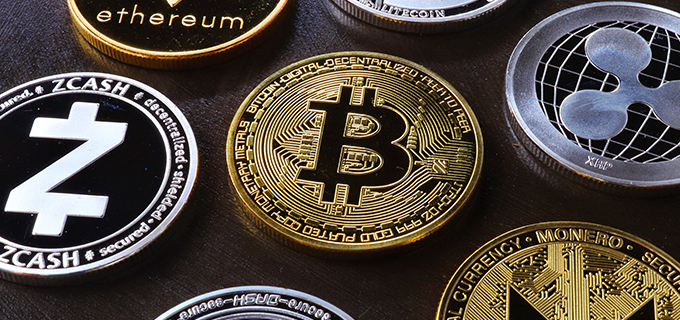Cryptocurrencies Make a Move to the Mainstream
Blockchain Innovation Expert, Citi Ventures

Among its many noteworthy distinctions, 2020 may go down in the history books as an important year for the normalization of cryptocurrencies such as Bitcoin and other blockchain-based assets. The tumultuous 12-month period ended with rapid cryptocurrency adoption and record prices.
It didn't start that way. Crypto prices fell, alongside most other assets, in the first quarter of 2020 due to fears of the looming COVID-19 pandemic. Staying true to their historical volatility, they fell harder than other assets. The price of Bitcoin declined more than 60% in just a few days, culminating in a historic drop on March 12―a day now known to the industry as "Black Thursday." Other cryptocurrencies, such as Ether, fell even more, and a few prominent decentralized finance (DeFi) applications suffered catastrophic glitches.
Unbeknownst to many investors at that time, however, the pandemic and its economic consequences would ultimately be bullish for the asset class. Black Thursday would be the low point for the year.
Driving Adoption
Blockchain-based assets are a natural beneficiary of the "everything digital" narrative that took over the global economy in the past year. One example is stablecoins—digital tokens tied to existing fiat currencies such as the dollar. The pandemic-induced crash in traditional markets drove global investors to seek dollars, and one place they found them was on the Ethereum blockchain where many stablecoins reside. According to data compiled by news outlets, the amount of such coins quintupled from the March lows to year-end.
Stablecoins may not be as decentralized as pure cryptocurrencies, but they share many of the underlying benefits such as 24/7 instant settlement, global reach, and access for anyone with a smartphone—including the unbanked. That fact was not lost on policymakers and central bankers, many of whom were already considering distributed ledger technology (DLT) for issuing a central bank digital currency (CBDC). Last year saw an acceleration of this trend, with the major international banks testing digital currencies.
Then there was the overall macro environment. The year 2020 set records for governments borrowing and printing money as they scrambled to head off an economic catastrophe. Bitcoin has always appealed to investors who fear this sort of active monetization. Indeed, the cryptocurrency was born out of a similar period in the aftermath of the 2008 financial crisis. What made last year stand out was the way institutional investors bought Bitcoin.
Institutional Uptake
Perhaps the biggest crypto development of last year (other than price) was the rapid normalization among institutional clients, a development that certain pundits have been speculating about for years. The first signal came in May, when a famed macro investor reported investing in Bitcoin on behalf of his clients―and likened its emergence as an asset class to gold 50 years ago. Other brand name money managers also revealed Bitcoin holdings.
Also of note were public companies revealing they had invested corporate treasury capital in Bitcoin as part of their growth strategies. Nobody, however, made a bigger splash than a fintech behemoth that in September revealed plans to roll out crypto access to its 300 million clients―going so far as allowing them to use one of four coins to pay its network of 25 million merchants.
These developments contributed to Bitcoin doubling in price and surpassing its 2017 highs in the span of three months. Another notable event late last year was the revelation that a major insurer invested $100 million in Bitcoin. Insurance companies are generally conservative with their asset allocation, so many observers were surprised that a reputable insurer would invest in such a volatile asset. Developments like this indicated rapid normalization.
More Regulatory Clarity
Last year was also important for compliance clarity regarding how banks and other entities could interact with digital assets. The regulators issued positive letters on nationally chartered banks custodying crypto assets for clients and holding cash backing stablecoins. Foreign regulators provided similar guidance, and the state of Wyoming made waves by issuing a special-purpose banking license to a crypto exchange. That trend has continued so far in 2021, with the OCC authorizing banks to directly interact with stablecoins and granting a national trust charter to a crypto-native company.
The cryptocurrency ecosystem has a lot of maturing to do and price volatility is likely to continue. But 2020 represented an important inflection point as it became clear this new type of financial asset will now be a permanent part of the investment landscape. Traditional players will have to adapt and decide what role they would like to play.
For more on DLT and digital assets, click here.